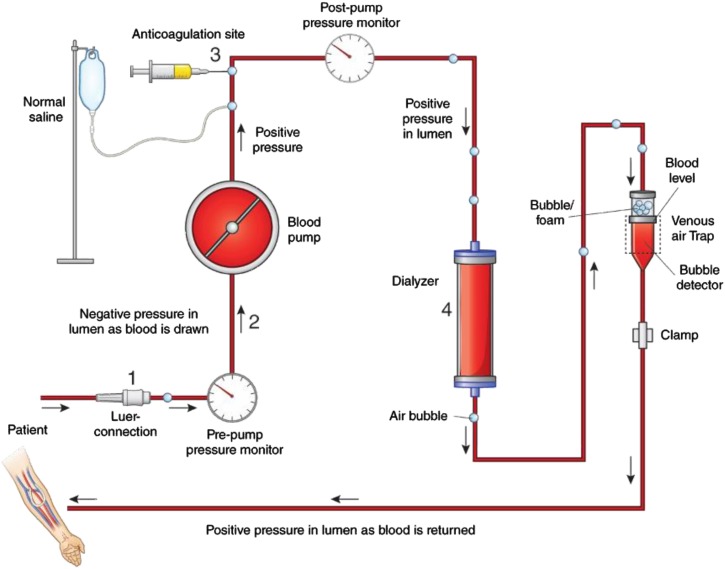Figure 1.
Venous air embolism may arise from 4 possible areas of air entry into the dialysis circuit. Schematic diagram of a hemodialysis circuit depicting four possible areas of air entry. (1) A broken or loose luer connection between the arterial needle and the tubing can result in air entry, because this segment has negative intraluminal pressure. (2) A hole in the arterial tubing can suck air into the arterial line. (3) Air entry can occur during administration of anticoagulation or saline. (4) Inadequate priming can result in air entry from the dialyzer or dialysis tubing. A crack in the venous bloodline will not cause air entry due to the positive intraluminal pressure. Air entering the circuit presents to the venous air trap and forms foam/bubble at the top of blood level. As soon as the blood level in the venous air trap chamber falls below the air detector level, it immediately triggers an alarm and stops blood flow. As a consequence, venous air embolism occurs due to human error.

